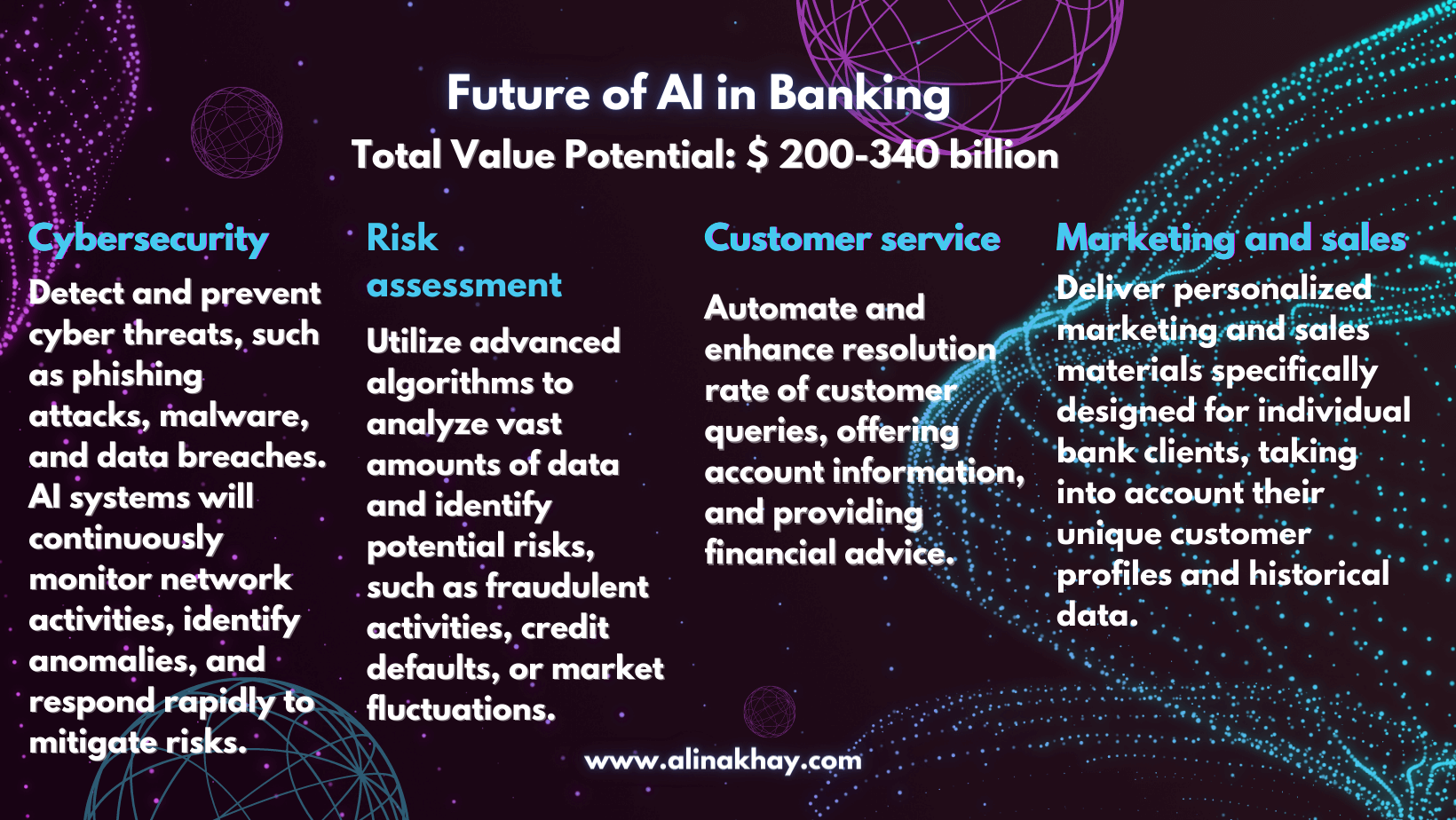
🏦 Revolutionizing the Future of Banking Industry with Generative AI
11 July, 2023
In today's fast-paced world, the banking industry is continuously seeking innovative solutions to stay ahead of the curve. One such solution that holds immense potential is generative AI. This groundbreaking technology is poised to transform various aspects of banking operations, leading to increased productivity, improved decision-making, and enhanced customer satisfaction. In this blog post, we embark on a journey to explore the value that generative AI can unlock for banks and delve into specific use cases that demonstrate its transformative power.

🛡️ Enhancing Cybersecurity 🔐 Safeguarding Banking Systems and Customer Data
As the banking industry becomes increasingly digitized, cybersecurity remains a top priority. Generative AI is set to play a pivotal role in fortifying banks' defenses against cyber threats. Advanced AI algorithms can detect and prevent phishing attacks, malware intrusions, and data breaches with unparalleled accuracy. By continuously monitoring network activities, identifying anomalies, and responding swiftly, generative AI ensures the security and integrity of banking systems and safeguards precious customer data.
🏦 Streamlining Back-Office Operations 💬 Boosting Efficiency and Customer Service
Banks grapple with the challenge of managing complex back-office operations. Generative AI comes to the rescue by automating lower-value tasks such as reporting, regulatory monitoring, and data collection. This not only frees up valuable resources but also enhances accuracy and compliance. Additionally, customer-facing chatbots powered by generative AI act as virtual assistants, swiftly assessing user requests and connecting them with the most suitable service expert. This seamless access to relevant information enables faster response times and elevates the overall customer service experience.
💻 Accelerating Software Development 🤖 Empowering Innovation and Reducing Technical Debt
Innovation and agility are paramount for banks to thrive in the digital age. Generative AI tools provide an unprecedented boost to software development processes. By assisting developers in code creation, testing, translation, and review, these tools expedite the development lifecycle. They minimize friction, resulting in the creation of robust and effective code. Moreover, generative AI facilitates the integration and migration of legacy frameworks, enabling banks to reduce technical debt and deliver software faster, keeping pace with the ever-evolving technological landscape.
📝 Tailored Content Production at Scale 🗂 Personalization and Compliance Made Easy
Delivering personalized marketing and sales content has long been a challenge for banks. Generative AI comes as a game-changer in this realm. By leveraging existing documents and data sets, generative AI streamlines content generation, allowing for the creation of tailored content for specific client profiles. This opens doors to more effective marketing strategies and A/B testing, ultimately enhancing customer engagement. Furthermore, generative AI automates the production of model documentation and ensures banks stay compliant by promptly alerting them to relevant regulatory updates.
🔎 Risk Scanning Real-Time Threat Mitigation and ⚖️ Informed Decision-Making
Risk scanning is a crucial aspect of banking operations. Generative AI, with its advanced algorithms and data analysis capabilities, empowers banks to identify potential risks promptly. By detecting fraudulent activities, credit defaults, market fluctuations, and other threats in real-time, generative AI provides accurate risk assessments. This enables banks to make informed decisions and take proactive measures to mitigate potential threats effectively.
🎯 Considerations for Banks ✅ Navigating the Path to Success
As banks embark on the journey of integrating generative AI into their operations, certain considerations come into play. Factors such as the level of regulation for different processes, the diversity of end users, and the intended level of work automation must be carefully assessed. Additionally, data constraints must be managed prudently to protect customer privacy while leveraging public data to gain valuable insights.
Conclusion
The integration of generative AI marks a turning point in the banking industry. By harnessing its power, banks can unlock significant value, reaping the benefits of increased productivity, improved decision-making, and enhanced customer satisfaction. From fortifying cybersecurity to streamlining operations and accelerating innovation, generative AI offers an array of opportunities for banks to thrive in the digital era. By embracing this transformative technology, banks can position themselves as pioneers in the industry, ready to conquer new horizons and redefine the future of banking.